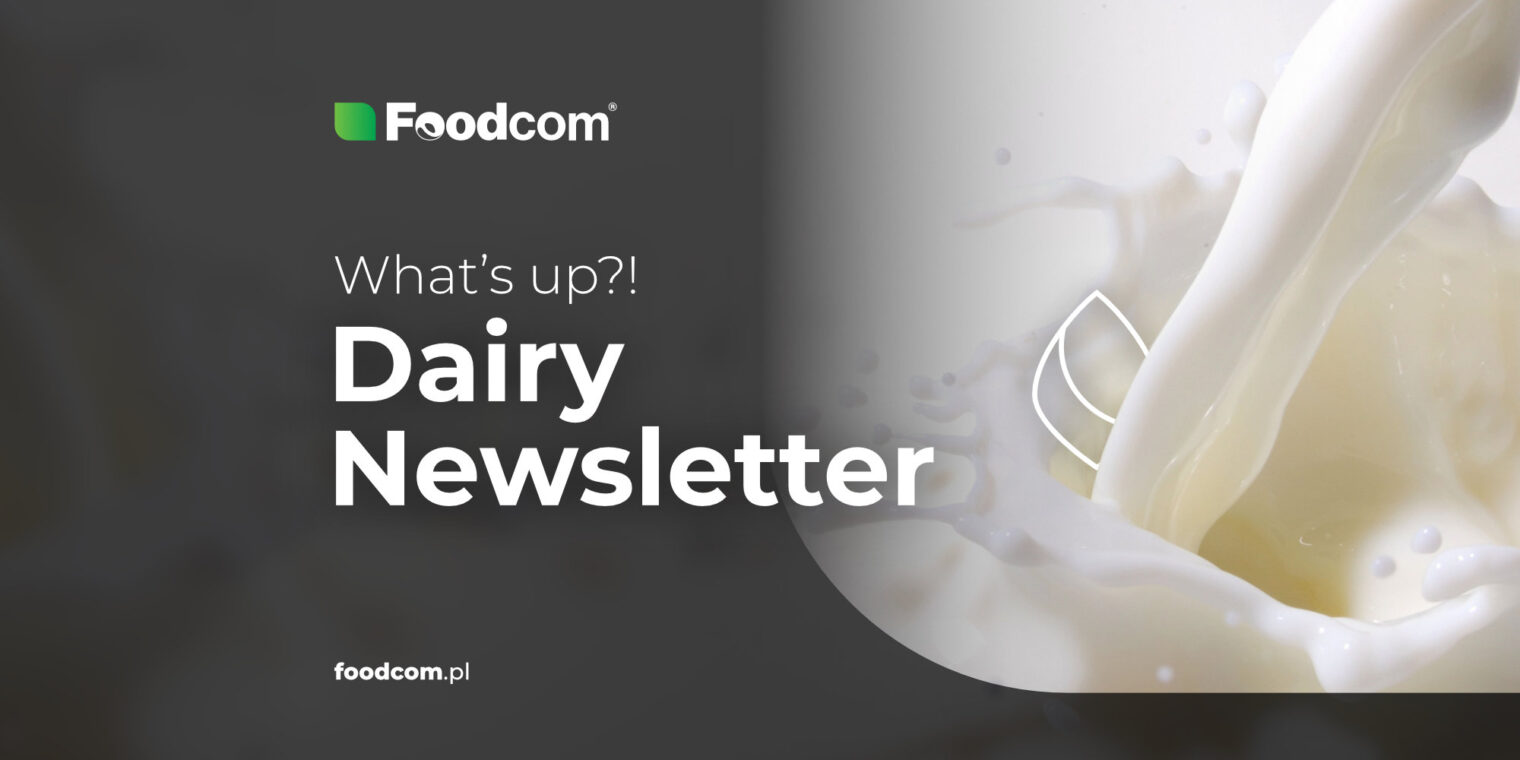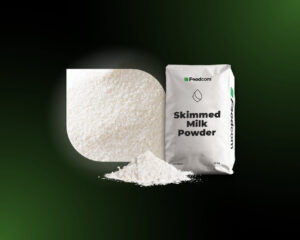- Fluctuating prices and demand for dairy products such as milk powder, cheese, and butter.
- New EU regulations on deforestation, raising concern among farmers and criticism from the sector.
- Milk production growth projections in Mexico according to USDA, despite global challenges.
Hello Partners!
Welcome back to our Newsletter!
We present the current situation on the dairy market, looking at the development of prices and demand for various products. In this overview, you will learn how the fluctuations in prices for milk powder, cheese and fats reflect the current challenges and what the USDA predicts for milk production in Mexico. You will also find out how farmers are reacting to the new EU regulations on logging, which are sparking a debate about the future of the dairy sector.
Let’s take a look at what else is happening in the dairy market!
Skimmed Milk Powder
The market for SMP for feed has recently traded at 2150 EUR/MT for immediate delivery. However, the market is currently struggling to find buyers, indicating a weakening demand for this feed product category.
On the market for SMP for direct consumption, bids are currently observed in a price range between 2200 and 2300 EUR/MT. Some producers have decided to suspend their offers as they hope that market conditions will improve in the future. This indicates that there are expectations for a possible improvement in the market for this product.
Cheese
A downward pressure can be observed in cheese prices, although it is not as strong. Cheddar remains stable with a slight downward trend, while Gouda has recorded larger declines, which indicates a possible oversupply or decline in demand. Mozzarella, which has also fallen in price, has probably been influenced by seasonal fluctuations. We see that the market is preparing for possible further price adjustments, but without major shocks.
Fats
Butter prices continue to range between 5400 EUR/MT for products from Poland and 5550 EUR/MT for butter from the Netherlands, Germany and Belgium, with reports of prices of up to 5700-5750 EUR/MT. Strong retail demand ahead of the upcoming holidays is supporting the continued high prices for the product. AMF continues to remain stable.
Liquids
In the period before Easter, Cream prices fluctuate between 6500-6700 €/MT, while after the holidays they are expected to fall to 6200-6300 €/MT. This price difference reflects the seasonal shifts in demand that characterize the period before and after the holidays.
Skimmed Milk Concentrate prices in Germany fall to a range between 1500 and 1550 EUR/MT FCA, with some transactions recorded at 1400 EUR/MT FCA. This price drop can be interpreted as a reaction to possible changes in demand or availability of this product on the market.
The most attractive offer for milk is made by the cheese industry. Spot Milk is sold at prices that are slightly below the payments to milk producers. Increasing competition for milk supplies from farmers, more and more of whom are considering stopping production, suggests that the current imbalance could continue for some time.
Whey powders
On the SWP bulk feed market in the Netherlands, prices remain around 640 EUR/MT, both for immediate delivery and for April. The stability of SWP prices is possibly due to the limited availability of drying places, which are currently preferred for SMC production.
Prices for Sweet Whey Concentrate remain in a stable range of 250-400 EUR/MT FCA. Nevertheless, there are reports of small price increases. This trend, similar to SWP, is due to the difficulties in securing access to drying rooms.
What else?
New EU regulations on deforestation, which are due to come into force from the beginning of 2025, are causing unrest among farmers. Farmers will be obliged to check the origin of animal feed to ensure that it does not come from deforested areas. However, the lack of preparation on the part of the European Commission and the member states has been met with criticism. Jacek Zarzecki, President of the Polish Association of Beef Cattle Breeders and Producers, compared the regulations to “putting out a fire with gasoline” and advocated postponing their implementation and only extending them to countries affected by deforestation.
Forecasts by the USDA’s Global Agricultural Information Network (GAIN) predict an increase in Mexican milk production in 2024. The forecasts are based on lower prices for animal feed, strong domestic demand and improved efficiency on dairy farms. Fluid milk production is expected to increase by 2%, supported by favorable weather conditions and modern herd management. Imports of cheese and milk powder are also expected to increase due to rising demand. Farmers are waiting for a stable government policy that could influence the future of the dairy sector.








